2018-12-25
Based on
Influences
https://cooking.stackexchange.com/questions/37969/how-do-i-get-crispy-but-thin-bread-crust
http://www.thefreshloaf.com/node/20033/tartine-whole-wheat-loaf-quotholeyquot-grail
Ingredients
| Ingredient | Weight (grams) | Baker’s Percentage |
|---|---|---|
| King Arthur Bread Flour | 270 | 50.0% |
| King Arthur All-Purpose Flour | 270 | 50.0% |
| Filtered water | 324 | 60.2% |
| Kosher salt | 19 | 3.5% |
| Sourdough Starter * | 360 | 66.7% |
* Ischia Island (Italy) sourdough starter at 100% hydration
Total hydration: (324+(360/2))/(270+270+(360/2)) = 70.1%
Flour protein content: 12.2% King Arthur Bread Flour protein content: 12.7% King Arthur All Purpose Flour protein content: 11.7%
Process
Feed starter and allow to ferment at room temperature until it forms lots of decent-sized bubbles.
Mix all ingredients and stir with a spoon until combined (but do not knead).
Transfer to a container with top, cover, and allow to rise at room temperature for 4 hours. Transfer to refrigerator and allow to ferment another 9 hours. Remove from refrigerator and allow to rise at room temperature for another 4 hours. Return to refrigerator and allow to rise another 22 hours. Remove from refrigerator and allow to come up to room temperature for 90 minutes.
Preheat oven to 450 degrees Fahrenheit with a cast iron skillet on top of a baking stone on the bottom rack.
Flour work surface. Add lots of flour if needed to form a workable dough. Flour both the dough and banneton generously, place dough in banneton and cover. Allow to proof until they pass the poke test–around 30-60 minutes.
Transfer loaf from banneton to parchment paper. Flour the top of the loaves and score with a sharp knife at a 30 degree angle.
Place loaves and parchment paper in hot cast iron skillet, spray with filtered water, place top (an inverted stock pot works well) on skillet, and spray sides of oven with water. Close oven door immediately.
Lower temperature to 410 degrees Fahrenheit. Bake with top on the cast iron skillet for the first 35 minutes, then remove top, turn 180 degrees and spray top of loaf and sides of oven again with filtered water. Close oven door immediately.
After internal temperature reaches 207 degrees Fahrenheit, increase temperature to 475 dgrees Fahrenheit and bake for another 5 minutes.
Rest on a wire rack for at least two hours before cutting.
Notes
Salt content was decent but could still go a little higher, and might help bring out the sourness of the sourdough a bit better.
Oven spring was decent, could have been a little better.
Crust was good. Thinner and crispier than with previous loaves.
Crumb was better–had a softer feel than past loaves that were all bread flour. Could still stand to be a little softer (and maybe slightly drier) but it was certainly very good.
Images
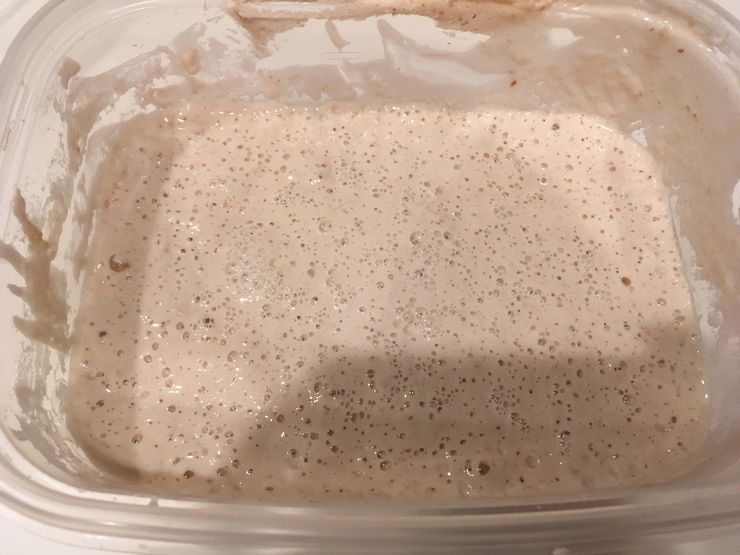 Starter
Starter
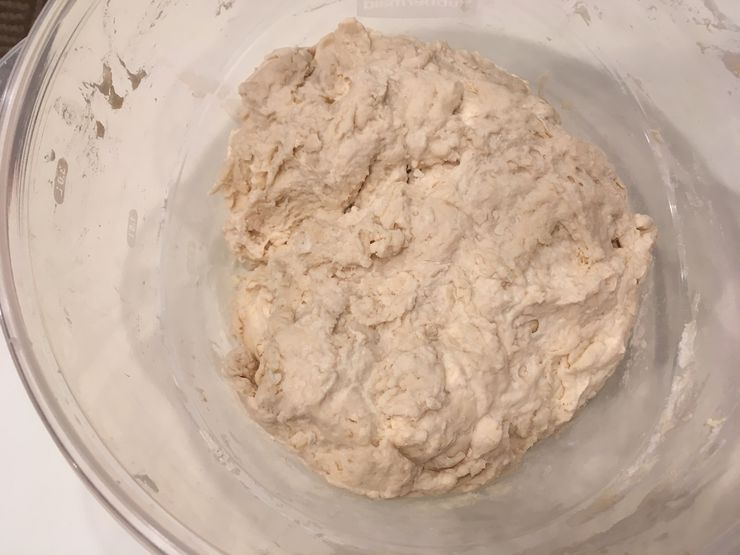 Dough
Dough
 Proofing
Proofing
 Scored
Scored
 Top
Top
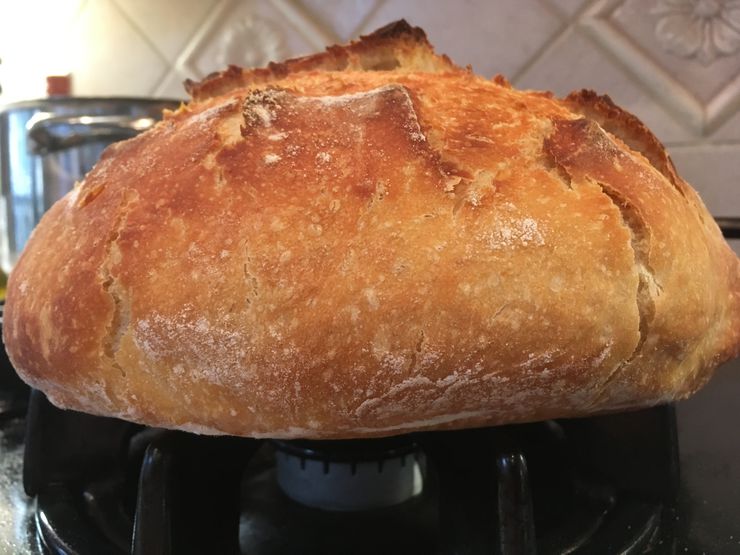 Side
Side
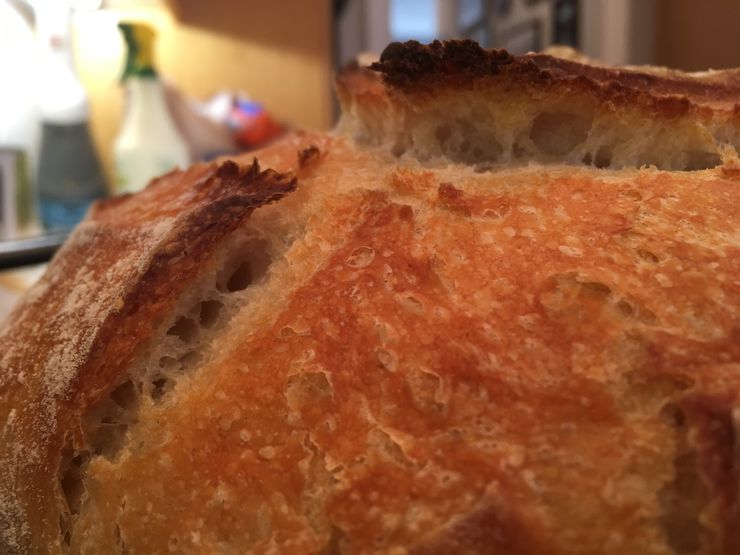 Crust and Ears
Crust and Ears
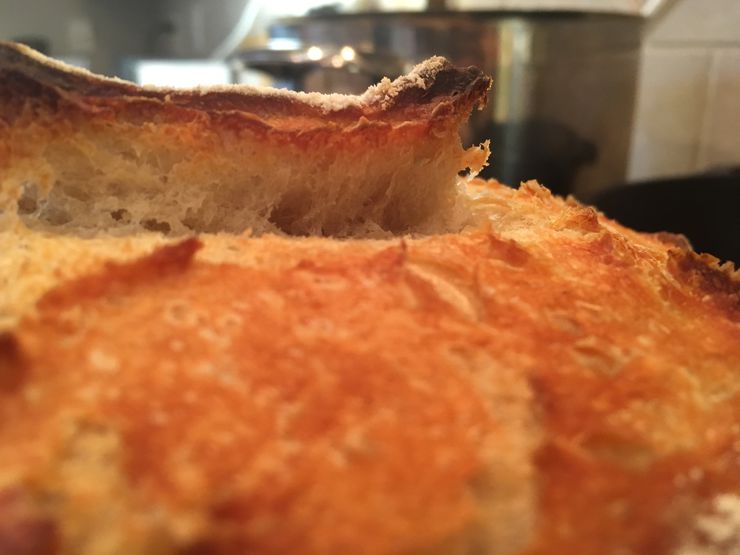 Crust and Ears
Crust and Ears
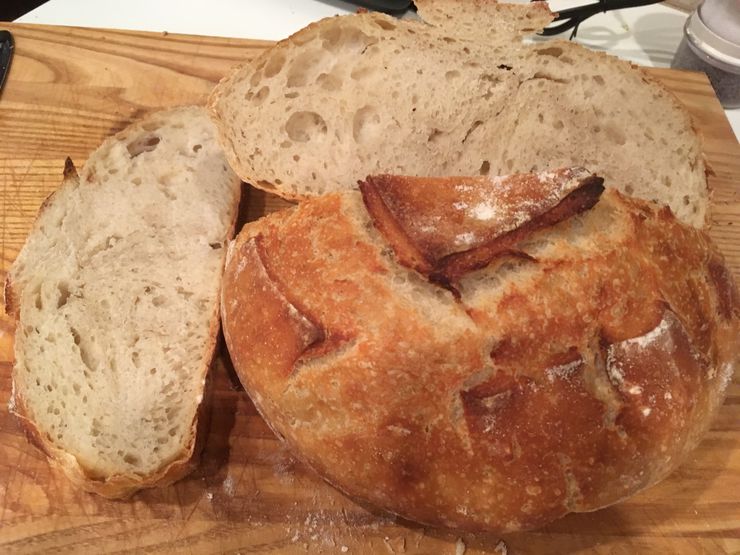 Crumb
Crumb
Upcoming experiments
Try increasing starter ratio and reducing fermentation time to increase the yeasty taste of the bread.
Add a little more salt.
Try leaving the bread covered a bit longer in the oven to get a really thin and crispy crust (as opposed to a rustic, crusty crust).
Try increasing all purpose flour content.
Try using some rye or whole wheat flour to improve the flavor.
Consider trying the Tangzhong technique to increase hydration of the bread.
Consider using a proofing bag to keep more humidity in during proofing.
Try baking in a real cast iron dutch oven.
Consider making the dough a bit drier for the bulk fermentation stage. Some articles mention that a drier starter makes a more sour bread. Might extend to the bulk fermentation phase as well. This bread was 70.0+% hydration during bulk ferment; maybe try to get below 68% (or lower) and see how it goes.